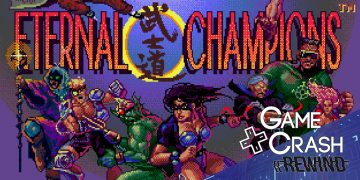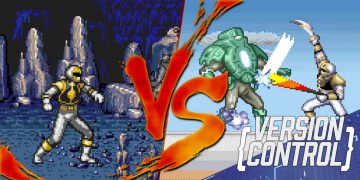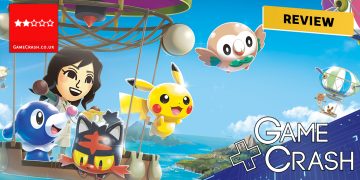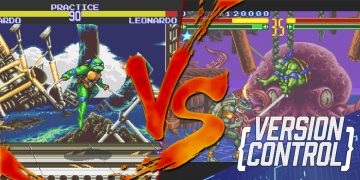In 2014, pretty much 2 and a half years ago now, we posted on Pokecharms.com about the possibility that Nintendo would be bringing new hardware to that year’s E3. Back then we talked about rumours that this new hardware would be neither a successor to the Wii U in the console world nor a successor to the 3DS in the handheld world, but a fusion of both worlds into one machine. As I said then, “It’s… one of the few logical paths left for Nintendo to travel on in the console space.” and as the Wii U continued to struggle on for 2 more years, that’s never gotten any less true.
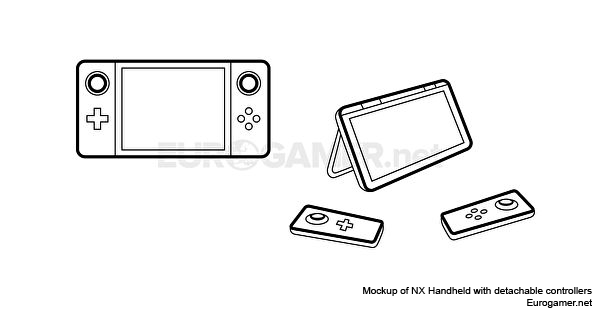 It turns out that we were seemingly right on the money with that post 2 years ago, because mounting evidence has come to light in the past few months — most specifically from Eurogamer’s in-depth report — that the Nintendo NX, as we now know that hardware to be provisionally code-named, is absolutely a merging of Nintendo’s two primary gaming businesses. A handheld gaming device with a touch screen that can play your games on the go, and a base that connects those same games to your TV to play at home.
It turns out that we were seemingly right on the money with that post 2 years ago, because mounting evidence has come to light in the past few months — most specifically from Eurogamer’s in-depth report — that the Nintendo NX, as we now know that hardware to be provisionally code-named, is absolutely a merging of Nintendo’s two primary gaming businesses. A handheld gaming device with a touch screen that can play your games on the go, and a base that connects those same games to your TV to play at home.

So, it is the fact that we – the potential consumers of this new hardware – knowthe key idea behind the format. We know that the hardware will be released by the end of March 2017, and we even know a number of the games that are going to be coming out on it (The Legend of Zelda, Dragon Quest, Just Dance, Sonic 2017)… and yet, since the very day that the late Satoru Iwata confirmed to an investor’s meeting in 2015 that the NX, was in fact, a thing, the only words that Nintendo have said in relation to the NX are ‘We will not be talking about NX’.
Well, that’s likely to change very soon. Eurogamer’s article was one of the first signs that the NX machine was starting to mobilise in earnest, and we understand that a retailer briefing was held (privately, of course) recently in advance of opening the doors on pre-selling the product. Tesco Direct even apparently made a boo boo a week or so ago in listing a ‘Wii U NX’ on their sitebefore quickly taking it back down. That was, almost certainly, simply internal preparations for a company that uses stock numbers printed in a physical catalogue as a backbone of their business, but it highlights a level of movement that has been long coming. In the coming months, no matter how secretive Nintendo might like to be about the NX, the reality of having to put the machine and all associated marketing into the real world to be prepared for an actual release in March would make those efforts a folly. The fact is, despite having been stubbornly silent about it for so long, Nintendo’s running out of time to indulge that secrecy and by the end of this month, it’s incredibly likely we’ll finally get that formal reveal we’ve been waiting for.
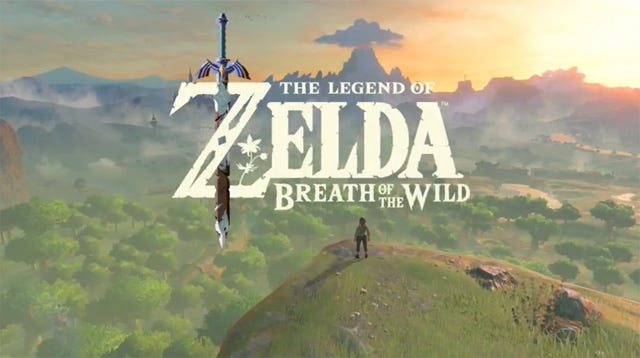
Further evidence for a reveal this month may also be taken by the all-but-total absence of Nintendo at E3 this year following an apparent last-minute delay to the NX (given away by the delay of the Zelda game we’ve all suspected would be a launch title for the platform in a manner similar to Twilight Princess’s Wii launch). With the original expectation of a Late October/November release of the hardware, and an E3 reveal prior to that, the delay to March shifts the originally planned reveal to roughly about now. But, even if October manages to escape without a reveal, it’s practically impossible that November also will, so either way we can very safely say the time is finally here (almost).
But… even though we’ve covered the inevitability of the direction of the NX and the inevitability of its reveal, the real thing we need to talk about is if its fate is also inevitable once it’s finally here?

Nintendo may be utterly dominant when it comes to the dedicated handheld gaming market, but that market has been compressed by the rise of the non-dedicated handheld gaming market. The mobile market of (primarily) the iOS and Android platforms has erased sheer millions of potential consumers from Nintendo’s reach. Combined, the Nintendo DS and PSP amounted to 234.5 million sales throughout their lifetime, while the 3DS and Vita have found just 73.3 million in theirs. Neither has very much room to find enough further sales to make up a 160 million sale deficit considering the Vita has been all but abandoned and the 3DS will have its own inevitable fate to confront during the 18 months after the NX’s release. Nintendo themselves have recognised this, which is why we’ve seen them slowly move towards supporting those mobile platforms – the first time Nintendo has ostensibly supported a hardware platform other than their own with internally developed software. When Nintendo is having to chase after a separate market even while consolidating their two existing ones, is that maybe a massive red flag hanging over the potential of the NX that can hardly be ignored — despite Nintendo’s now-well-practiced ostrich impressions?

So, moving beyond the things that we know, there is the murky world beyond that is the things that we think. Take the rest of this article as speculation, and some of it hopeful (in ways that Nintendo will perhaps dash by remaining true to Nintendo form somehow), but most of it being, certainly what I think is, just about the only path Nintendo has open to them, the same as I originally said 2 years ago when we first started talking about the development of a Handheld/Console ‘Fusion’ device.
What I would suggest, first of all, is that Nintendo’s increasing mobile support does not come merely from a place of needing to chase after lost customers, or even as a ‘backup plan’ to become simply a software developer and publisher, rather than an integrated hardware company. On the contrary, it’s actually a part of the exact same strategy that has led them to combining their console and handheld markets. The NX won’t just be a 3DS/Wii U combo to sit alongside separate software efforts on other companies’ platforms — but a combination of all three platforms — Home Console, Handheld console and mobile ‘device’. I make the distinction of ‘device’ there because we can be fairly certain that Nintendo won’t be releasing a phone in the sense of a mobile device that takes a sim card and can make calls and texts.
However, with the reports that the NX ‘handheld device’ is — in effect — a touchscreen slate that you can snap controller parts onto, the hardware is already seemingly in a place where games like the recently revealed Super Mario Run can be played in the same manner as they would be on your iOS or Android device — but without compromising the ability to play other ‘traditional’ console/handheld games.
With the rise of game engines such as Unity, it’s actually easier than ever before for developers to create a game targeting multiple platforms at once and not need to redevelop the game or go through expensive porting processes to release on all of them. In fact, in Unity, it’s effectively a single button press. Even if the NX isn’t inherently based on Google’s open source Android operating system (which it might be, even if it ends up heavily customised), the tools are there for Nintendo to release their mobile games on three platforms (iOS, Android, NX) without significant compromise or cost. Even if you ignore the signs on the hardware front, or the ease of achieving this on a software level, the fact that the lid has been kept firmly shut tight on upcoming mobile releases of Animal Crossing and Fire Emblem amid a delay mirroring that of the NX itself from this year to next March is enough to give away the right clues to what’s going on.
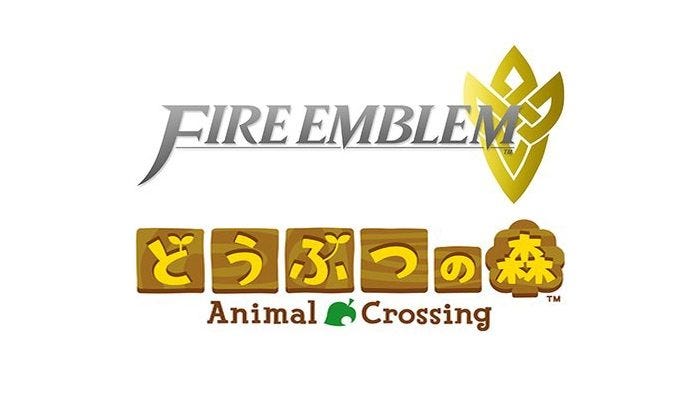
Now, quite how that comes together in practice is probably going to be the real test — questions over game purchases and saves carrying over between platforms are likely to result in extremely Nintendo (read: frustrating) answers. But there is an argument to be made that if you can, at least, use iOS and Android to get people interested in games that are part of your much wider ecosystem, then perhaps those users will find value in a dedicated handheld game platform after all. They get a taste on their phone and can indulge in a habit on the NX itself with a much wider library. Convincing people to pick up a dedicated device to play games you can already play on your phone isn’t an easy one, for sure, but it would be up to Nintendo to provide greater value to their own platform with a wider range of software and as much convenience in using both platforms as possible.

But, even if the NX can make sense of a shrinking handheld market and a growing mobile market by shoving the two together and urging them to kiss, what of the console market? In Japan, while the 3DS and even the Vita remain relatively strong sales-wise, the free-to-play-powered mobile market and a thirst for gambling-alike games such as Pachinko in a country where gambling is officially outlawed, has decimated the console market completely. While the Xbox has struggled to find a foothold in the country in any iteration, both Sony and Nintendo likewise have had much less of their way in Japan as they traditionally have. Perhaps a few years ago, the Wii U might have been kept above water by Japan at least (much as it is doing for the Vita), but today, even the Japanese aren’t buying. There just isn’t that thirst for playing video games at home, on the TV, in the country any more. Meanwhile, Nintendo have found themselves squeezed out of Western markets in the console space by their reluctance (and, perhaps, inability) to compete on even ground with the technological might of Sony and Microsoft’s consoles. Nor can Nintendo compare to their wider entertainment offerings that make up a significant portion of their overall success. The Wii U simply has no even ground on which to stand — and in its console format, what makes the NX any different?
Well, fundamentally, from what we know of the NX, there’s nothing different. In fact, if anything, it is simply more of the same in regards to the Wii U. It won’t be quite as powerful as the Xbox One or PS4 and it’d be an absolutely continental difference to the PS4 Pro and Xbox Scorpio that it will have to compete with, probably much sooner than Nintendo would have liked or expected. It almost certainly won’t be capable of 4K or HDR, so even if it comes with a customary Netflix app, you’d still be better off with either of the other consoles, or even a £60 Chromecast Ultra, when it comes to non-gaming entertainment. Gameplay won’t be a significant innovation over the Wii U, with the handheld NX basically being a spiritual successor to the Gamepad, and there not really being anywhere for Nintendo to really go in leading that innovation in gameplay, hardware-wise, without jumping into Microsoft and Sony’s pissing contest outright. You can probably count out VR support too — at least on the same level as the likely Oculus Rift support for Scorpio or PSVR — though there’s a possibility we could see Nintendo embracing mobile VR as that market grows with its own Daydream headset. All in all, that doesn’t really paint a particularly bright future for the NX in its ambitions as a home console. Nintendo’s been down this exact same road with the Wii U and found a dead end.
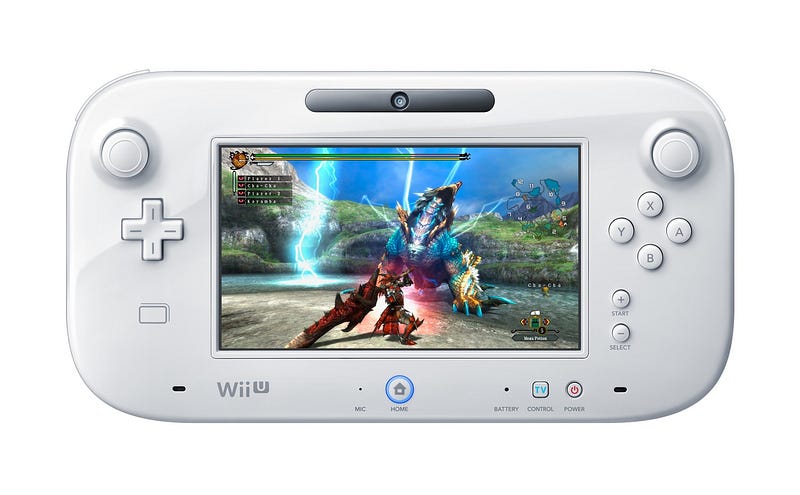
Perhaps, though, the real value of the NX as a home console is really just one of choice. One of the best features of the Wii U was off-screen play. If you wanted to play Arkham City in bed — provided you were positioned within range of the Wii U — you could. If you wanted to play it while your family watched X-Factor without having to hide away elsewhere in the house, you could. Aside from the benefit (and novelty) of being able to play a console-level AAA game in a handheld format, what it truly afforded you was choice. The NX does little different to this formula beyond refining it such that it makes the Wii U/Gamepad setup look prehistoric in comparison, but it doesn’t need to do more than that. The affordance to either play your console-level AAA game on your TV or handheld device — and then to be able to take that game on the go with you, seamlessly, is a compelling hook — even if it’s not a sales-driving force in and of itself.
Nintendo can’t compete as a home console. That is a fact that the Wii U has hammered home. What a home console is today has changed so far beyond being what Nintendo will ever want to, or even maybe be able to make, that it’s a market only for companies like Microsoft and Sony who are using it to join dots in their wider business strategy. The NX, then, isn’t really a home console. It doesn’t share much with Microsoft and Sony’s devices beyond having a box that plugs into your TV. In the same way that Apple TV, Android TV or Chromecast — all of which provide the opportunity to play games on your TV — are not consoles, the NX, effectively, isn’t one either. So, perhaps it’s actually just irrelevant what the console market has to say about it.
Overall, as a gaming platform, Nintendo will have to compete with Microsoft and Sony to get people to drop cash on the NX over (or at least, on top of) the others, but by distancing themselves from direct competition against the PS4 Pro and Scorpio, they also distance themselves from direct comparisons in much the same way as Apple and Google’s (similarly competing) platforms do.
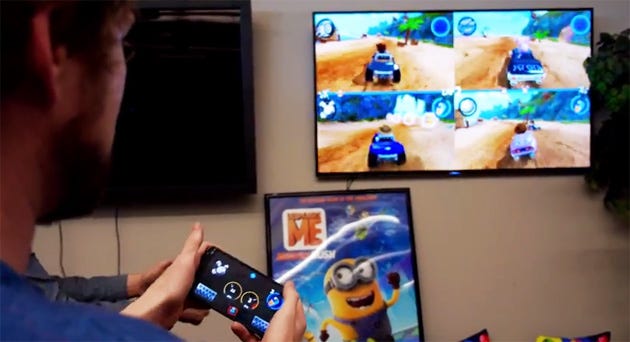
So, ultimately, the NX isn’t a console — because Nintendo can’t make a console in today’s market given the latest definition of what a console is. It’s not a mobile phone, but it probably is a mobile platform all the same — at least in terms of supporting the same software from both Nintendo and third parties. It’s not just a handheld device like the 3DS because it can also play your games on the TV if that’s what you want to do. In all, it effectively covers all the major bases in gaming, but without really tying their horse to any particular one — which is either a strategy for keeping their horse safe by not letting any one platform take it down with it, or a good way to make sure the horse bolts and is gone for good. At this point, it’s a little hard to tell which way it’ll play out, but it’s somewhat irrelevant. Nintendo’s cards were dealt to them at the start of this game years ago — ostensibly when Microsoft and Sony joined the table — and this is the only hand they’ve got left to play. If the great NX experiment fails, it might not outright take Nintendo down with it, but buying back into the game is going to be expensive, embarrassing and fraught with just as much, if not more, risk.
However, while I certainly think that the NX is going to find ways in which to ‘Nintendo’ things up, I’ve got a certain level of optimism about it all the same. As I said earlier, the core conceit of the device — that AAA-level games can be played on either your TV or on the go/in bed/on the loo — was an actually great part about the Wii U. It’s probably its only unquestionable positive. Going all in on that route may well have been the only choice Nintendo had available, but that doesn’t mean it wasn’t the right one.
Crucially, what it also achieves is something that has eluded both Nintendo and millions of fans for 20 years, but is instantly solved in one go — eventually, a main series Pokemon game will effectively be a ‘console’ game. I don’t think the Pokemon factor is one that can be understated. Aside from the fact that Pokemon has always been a significant driving force in hardware sales for Nintendo’s handheld platforms since the Gameboy, the millions of people that leapt onto Pokemon Go this summer is proof positive that the franchise is still one of — if not outright — biggest draws Nintendo has to offer any prospective consumer.
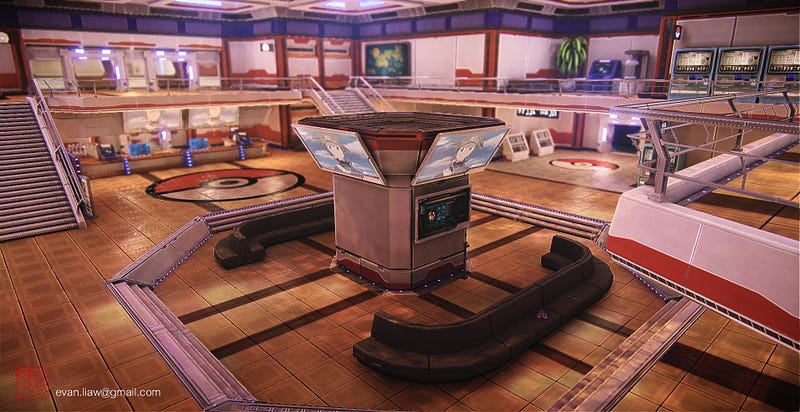
By combining their hardware platforms, Nintendo is also combining all of their most powerful IPs and all of their development studios into one, laser-focused point. The value of that can’t be overstated, and it’s by far the biggest weapon that Nintendo have available to wield against their competitors. Only Disney can rival the global appeal and recognition of Nintendo when it comes to intellectual property and franchises. If Nintendo can provide the system with the software support, led by their biggest IPs, at a rapid enough pace, then finding the spark that sets the NX alight is really in the marketing alone. The hardware would be there to provide an experience that, while it won’t meet the demands of the most graphics-hungry, will provide a nonetheless enjoyable one powered by choice in how to enjoy it; and the software would be there to drive people to the hardware.
For what might seem like a last roll of the dice, they’re pretty well weighted down by the power of Mario, Zelda, Pokemon and more besides, that Nintendo could find themselves rolling 7s all the same.
Matters such as price, online connectivity, local multiplayer and most importantly what software will come, not just at launch but in the short period thereafter, will be the real key points to take from the eventual reveal — as well as whether or not Nintendo can get their messaging of what the system is right after getting it so wrong with the Wii U. All of that will be just as important in deciding the NX’s fate as the makeup of the hardware or the power of Nintendo’s IP, but signs are still positive overall from what we’ve gathered in the absence of ‘official’ information. Now it really is just up to Nintendo to finally pull back the curtain and step out into the light.








